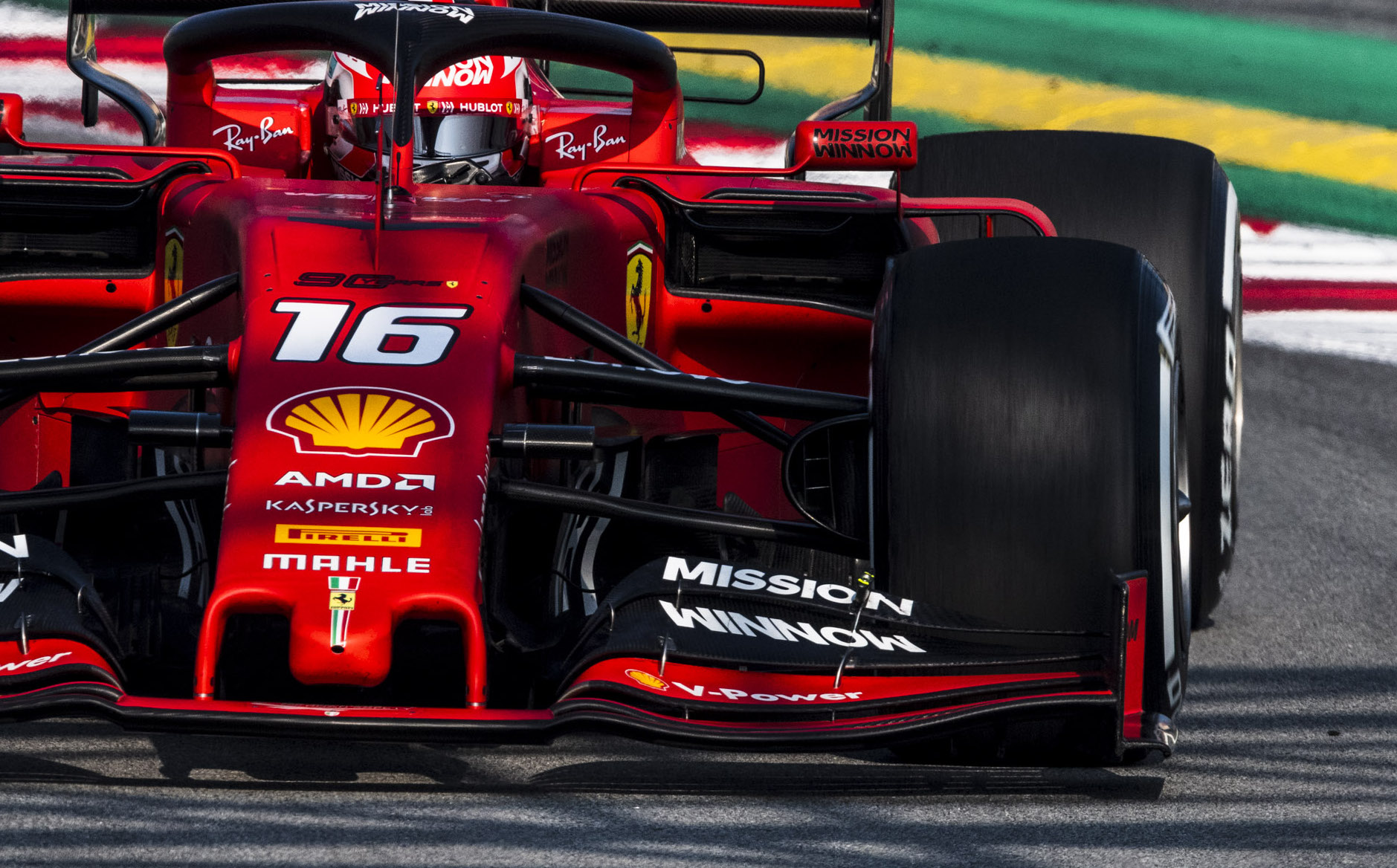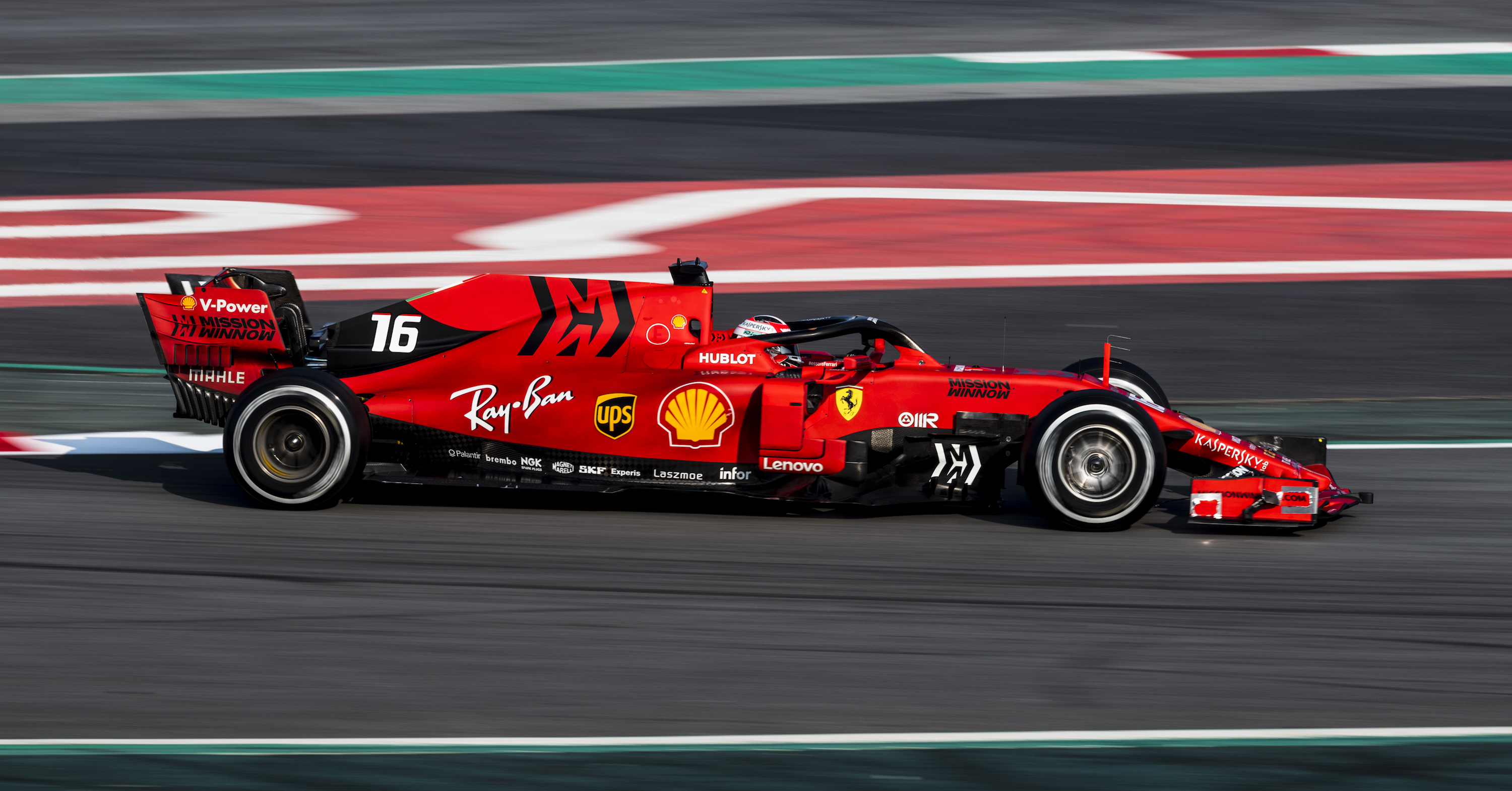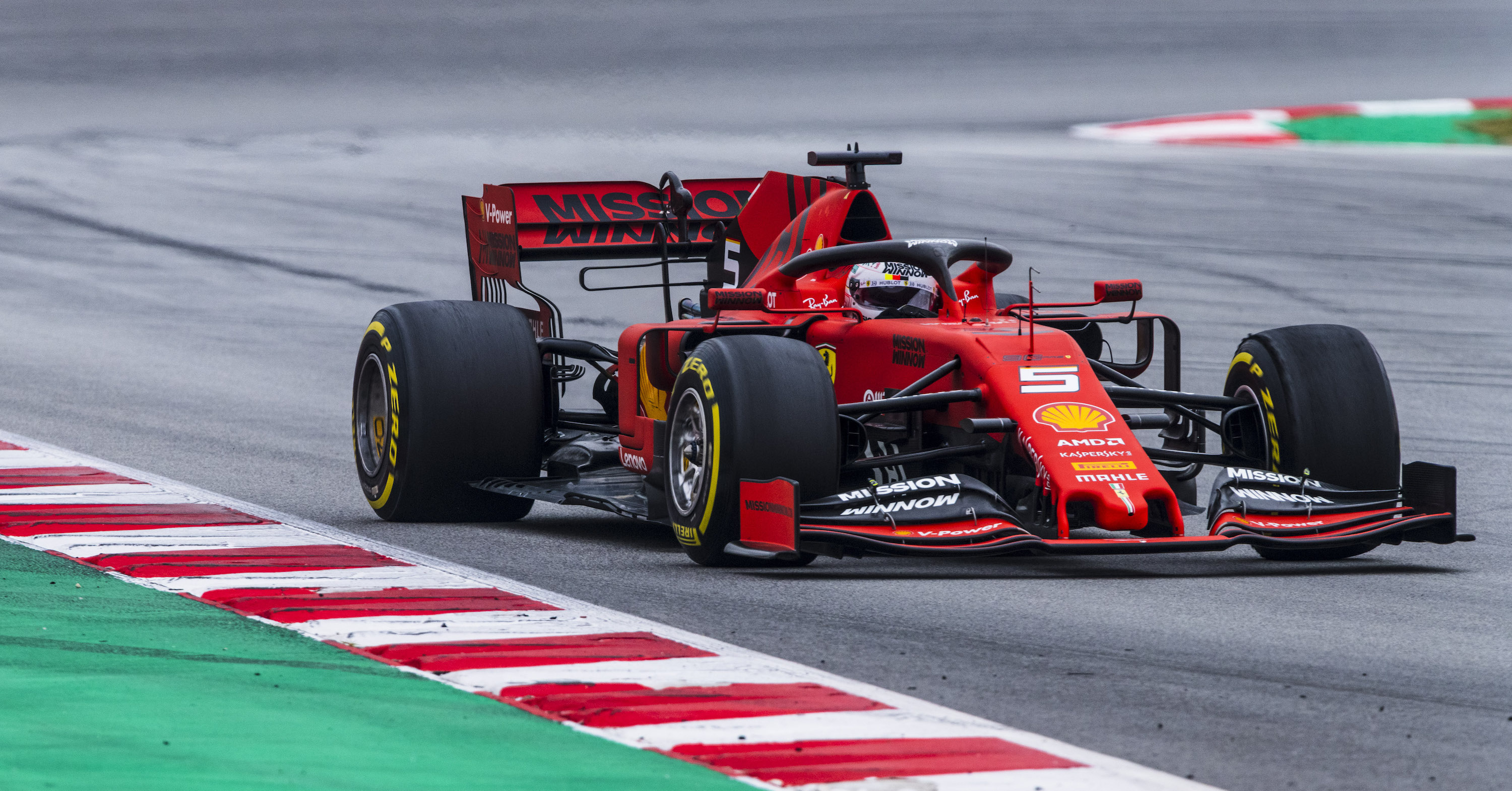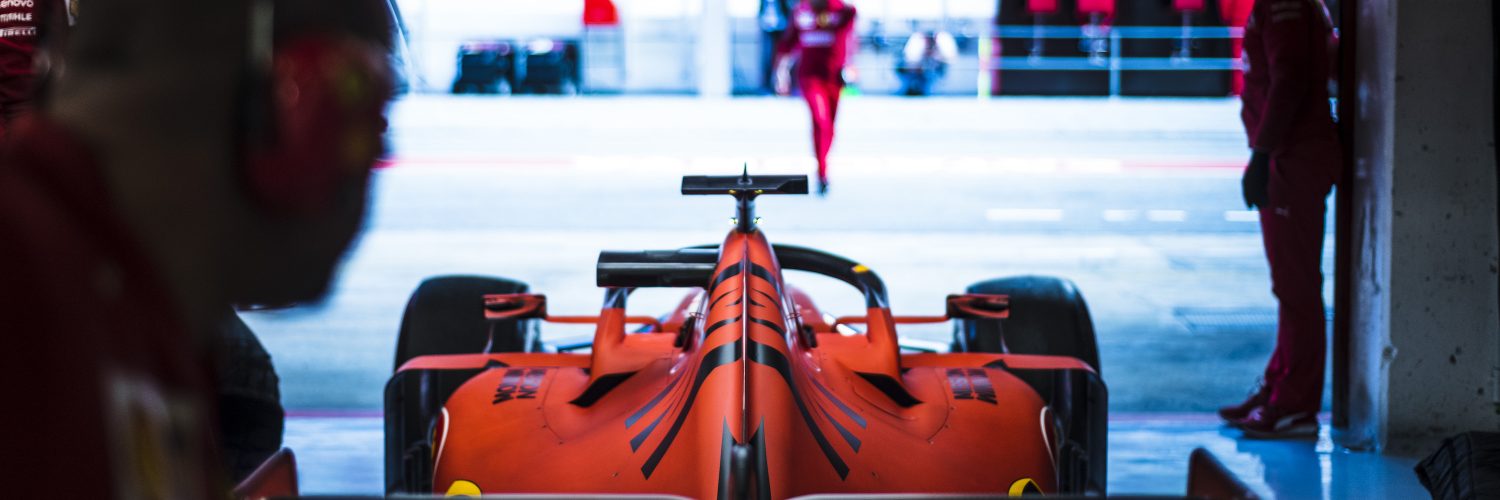As the car that seeks to be the title challenger to Mercedes, the SF90 from Ferrari shows an evolutionary approach to much of the car, while the work completed to beat the new aero regulations appears far more considered than its rivals.
After finally bringing its performance to a level where it could challenge Mercedes in 2018, the SF71H and the Scuderia itself failed to monopolize on its early-season pace. Driving and operational errors accounted for much of the lapse, so too did failures to develop the car and power unit, while Mercedes worked through its own operational and tyre issues.
Its new car must perform equally at all tracks and at all temperatures. In helping this, Ferrari is keeping the cars high rake and longish wheelbase to remove unexpected variables from its planning.
Front wing
In contrast to many other teams, Ferrari unveiled its SF90 with a well-developed front wing. Unlike the many basic front wings seen so far, the Ferrari wing is a more thoughtful response to the new rules than simply a broad five-element front V1.0 wing. It’s obvious that the wing works different in outwash to the other types, as the wing’s angle of attack flattens to almost nothing at its outer tips, where it meets the endplate. This v2.0 format wing is also being exploited by Sauber and some other teams to a less aggressive degree.

This flatter outboard section seeks to create outwash, not by the wing’s effect, but by exposing more of the endplate. Despite the limited endplate curvature allowed by the 2019 rules, the relatively tall endplate is still able to turn the airflow out around the front tyre, far more so than if the inside of the endplate had the full height of wing profiles stacked against it. In contrast to Mercedes, the Ferrari endplate is quite simple with a slight chamfer taken off the endplate’s side profile to encourage a vortex to further help push the tyre wake away.
The rest of the front wing’s span is given up for downforce and Y250 vortex creation. The wing is steepest in the middle of each span, this area sits clear of the front tyre and is used to create the downforce required to balance the car’s downforce front to rear. There is no issue with this small section creating enough downforce, even with the complex 2018 wings it was still only this area of wing that did the lion’s share of creating load over the front axle. The inner span of each wing is given extra freedom within the new rules to have more shaping, in order to continue to create what’s known as the Y250 vortex. This creates the second half of the outwash effect, by forming a powerful vortex that passes inside the front tyre and is turned outward by the bargeboards to push the tyre wake away from the car.
Front end
Despite the progressive front wing design, the car initially has a front end developed from the SF71H. With a thumb tip nose leading back to an S-duct inlet and wing mounting pylons twisted and slotted to direct airflow towards the front turning vanes under the raised section of chassis. Even these turning vanes owe a lot of their design to 2018, so it’s likely this entire area may be updated during the early part of the season.

With the new Pirelli tyres having a thinner gauge tread and wider spaced compounds, tyre management will be a key part of the championship, especially during qualifying and differing ambient temperatures, when the team need to change the energy the chassis passes into the tyres to keep them in their working temperature window. So, it’s not surprising that Ferrari hasn’t opted to go radical with its front suspension geometry, which retains low mounting positions for the wishbones, which may slightly hinder front wing performance, but aid tyre management and flow into the high top sidepods.
Outboard of the suspension, the front uprights are the same as provided to Haas, as are the wheels, but as yet there is no sign of the double rimmed wheels seen on its customer’s car. Although Ferrari will have developed its front brake ducts separately to Haas, there’s little doubt Ferrari will have some tricks in its inner brake duct design to push air through the wheel for a small but useful outwash effect, given that the blown front axles are now banned.
Sidepods
Ferrari wrote the book on high-top sidepod design over two seasons ago and the distinctive high inlet above the huge undercut is retained into a third season, with the inlet being subtly reworked for the new year. Before Ferrari ran two near-separate inlets, one forward facing and another above it formed into the top of the sidepod. Air flowed downward into the upper inlet, where it joined the same ductwork as the front facing inlet to pass air through the radiators. Now, similar sized and shaped ducts are effectively one opening, being split only by a small vane passing across the inlets before it joins the outer sidepod vanes.

The outer vanes follow the same principle as last year’s, where they straighten the airflow separating around the car, keeping clean airflow inside and dirty wake outside. Such is the degree the airflow turns outwards around the sidepod front that the small horizontal slots in these vanes usefully create a little downforce.
As with many teams, the mirrors are widely spaced and exploit the longer mounting for aero effect, even if the aim of the rules was to remove the aero benefit from the mirror pod’s mountings. No longer Halo mounted, the mirrors also do not yet have the ducted mirror pod introduced last year. This throughflow in the mirror housing reduced drag and allows the mirror to direct its wake more accurately along the sidepod tops, compared to conventional mirrors.
As the sidepods flow back to the rear end, the main volume is held quite high forming the cooling outlet, with an undercut running beneath. This may appear to be a bulkier sidepod design compared to Red Bull or Mercedes, but this is largely visual, as Ferrari seeks to keep the strong airflow passing through the front under directed more effectively at the diffuser.
If the sidepods themselves do not look slim, then the area above definitely is slimmer. Ferrari have repackaged its power unit again and this allows a slimmer profile to the area behind the roll hoop. There appears to be fewer radiators mounted above the engine, as suggested by the smaller roll hoop inlet which is distinctly slimmer and more triangular this year.
There may appear to be a shark fin fitted to the SF90, but again this is a visual trick, the top edge of the engine cover spine is fixed by regulation. But by having a tidier engine package and less radiators in this area, the bodywork can be slimmed to create a deeper and thinner fin.
This area has also benefitted from the repackaging of the turbo’s tailpipes, the three pipes are stacked vertically with the exhaust turbine tailpipe below and the one-into-two wastegate pipes mounted above. This arrangement moves the wastegate pipes out of the way of the rear wing and suspension mounts, leaving the tail of the car as slim as possible. So slim, in fact, that the bodywork must bulge slightly to clear the exhausts as they exit the rear of the engine.
Power unit
Every F1 Power Unit is packaged slightly differently. Ferrari has chosen to mount some of the turbo charge air cooling within the V of the engine, this initially hampered both the intercooling effect and inlet plenum design. It seems this area has been repackaged again, with the plenum being more conventional in shape and position, so it’s possible the charge air cooling package has been repositioned too. This work will have been done, not just for the engine’s performance, but also to package the revised slim line engine cover.
Ferrari’s PU was seemingly on par with Mercedes last year, but various issues hampered its development, with claims of oil burning and clever ERS strategies. But both the unit’s performance and reliability were finally at a level to be too close to call against the Mercedes.
With the Ferrari retaining its wheelbase length, the carbon fibre gearbox casing and cassette gearbox cluster within will be developments of last year. A distinctive feature of the Ferrari rear end last year was the oil breather exiting below the tail light. This appears to be retained this season, albeit there’s been less oil vapor seen blowing from the outlet.
Rear end

The higher and wider rear wing benefits from a two element T-wing mounted ahead of it. Unlike the T-wings of 2017, in this position, the current version doesn’t produce its own downforce but is trying to create slight downwash ahead of the top rear wing in order to make it more efficient. Also aiding the top rear wing’s efficiency are the vaned endplates. Where the endplate creases to wider at the top wing, Ferrari have mimicked McLaren and added openings with vanes hanging within them. This allows the airflow to expand behind the wing and create more downforce. Having tricks like this to help the rear wing will be important, as the bigger wing will create a lot more drag this year.



